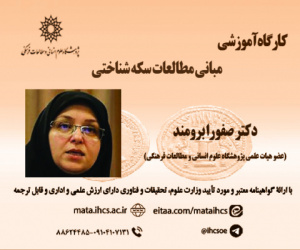پیش بینی گرایش به مواد مخدر بر اساس مهارت های ذهن آگاهی، انعطاف پذیری شناختی و سرزندگی ذهنی در نوجوانان (مقاله علمی وزارت علوم)
درجه علمی: نشریه علمی (وزارت علوم)
آرشیو
چکیده
هدف: هدف این پژوهش پیش بینی گرایش به مواد مخدر بر اساس مهارت های ذهن آگاهی، انعطاف پذیری شناختی و سرزندگی ذهنی در نوجوانان بود. روش شناسی: پژوهش حاضر از نظر هدف کاربردی و از لحاظ روش شناسی توصیفی-همبستگی (پیش بینی) بود. جامعه آماری این پژوهش کلیه نوجوانان شهر تهران بودند و نمونه ای به تعداد 150 نفر به روش نمونه گیری در دسترس انتخاب شد. ابزارهای مورد استفاده شامل پرسشنامه گرایش به مواد مخدر بهوچر، مک کنا و بن پراث (1992)، پرسشنامه انعطاف پذیری روانشناختی دنیس و وندروال (2010)، پرسشنامه ذهن آگاهی کنتاکی بیر، اسمیت و آلن (2004) و پرسشنامه سرزندگی ذهنی رایان و فردریک (1997) بود. داده ها پس از تأیید مفروضه های آماری با استفاده از رگرسیون چند متغیره و همبستگی پیرسون توسط نرم افزار SPSS23 تحلیل شدند. یافته ها: نتایج نشان داد که مهارت های ذهن آگاهی، انعطاف پذیری شناختی و سرزندگی ذهنی در مجموع 95.4 درصد از گرایش به مواد مخدر در نوجوانان را پیش بینی می کنند. در این میان، انعطاف پذیری شناختی (=β 104/0-)، ذهن آگاهی (=β 220/0-) و سرزندگی ذهنی (=β 713/0-) به طور معناداری با گرایش به مواد مخدر مرتبط بودند. همچنین، مولفه های مشاهده گری، توصیف بدون برچسب، تمرکزگری، پذیرش بدون قضاوت، جایگزین ها و کنترل، به طور معناداری با گرایش به مواد مخدر همبستگی داشتند. نتیجه گیری: نتایج پژوهش حاکی از آن است که مهارت های ذهن آگاهی، انعطاف پذیری شناختی و سرزندگی ذهنی می توانند به عنوان عوامل مهم در کاهش گرایش به مواد مخدر در نوجوانان نقش ایفا کنند.Predicting Tendency Toward Substance Use Based on Mindfulness Skills, Cognitive Flexibility, and Mental Vitality in Adolescents
Purpose: The objective of this study was to predict the tendency toward substance use based on mindfulness skills, cognitive flexibility, and mental vitality in adolescents.
Methodology: This study is applied in its objective and descriptive-correlational (predictive) in its methodology. The population consisted of all adolescents in the city of Tehran, and a sample of 150 individuals was selected through convenience sampling. The tools used included the Substance Use Tendency Questionnaire by Bochner, MacKinnon, and Ben-Porat (1992), the Cognitive Flexibility Scale by Dennis and Vander Wal (2010), the Kentucky Inventory of Mindfulness Skills by Baer, Smith, and Allen (2004), and the Mental Vitality Scale by Ryan and Frederick (1997). The data were analyzed using multiple regression and Pearson correlation in SPSS23, after statistical assumptions were confirmed.
Findings: The results showed that mindfulness skills, cognitive flexibility, and mental vitality together predicted 95.4% of the tendency toward substance use in adolescents. Cognitive flexibility (β = -0.104), mindfulness (β = -0.220), and mental vitality (β = -0.713) were significantly related to substance use tendency. Additionally, components such as observing, non-judgmental description, acting with awareness, acceptance without judgment, alternatives, and control were significantly correlated with substance use tendency.
Conclusion: The findings suggest that mindfulness skills, cognitive flexibility, and mental vitality play a significant role in reducing the tendency toward substance use in adolescents.







